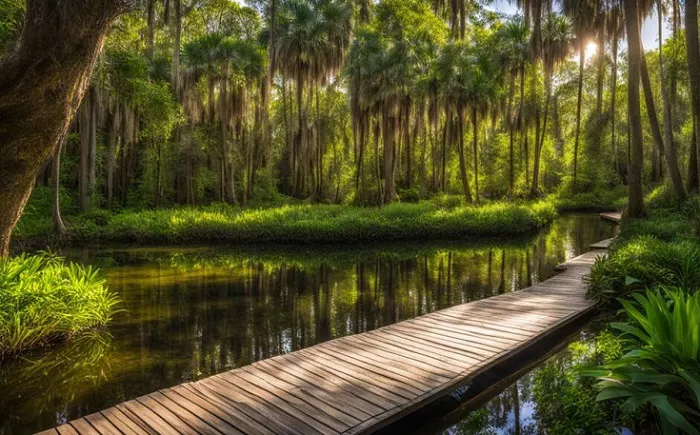ATLANTA, Ga. — Once a cherished backdrop for childhood memories and nature-filled weekends, America’s state and national parks are now facing mounting threats from unchecked development, environmental neglect, and government policy shifts.
As one of the fastest-growing states in the nation, Florida sits at the heart of this crisis. A combination of increasing population pressures and proposed legislation, such as the Great Outdoors Initiative (GOI), is putting the state’s protected natural lands at risk. The GOI, first leaked by a Florida Department of Environmental Protection cartographer, outlined plans to develop portions of seven Florida State Parks—plans that would fundamentally alter the ecosystems these areas were established to preserve.
These parks offer more than just recreation. They are vital sanctuaries for biodiversity, serving as critical habitats for countless species. Yet, organizations such as the Florida Wildlife Federation warn that ongoing development is accelerating the destruction of these natural environments. The primary concern is that once these lands are altered, the damage is permanent—natural landscapes cannot be restored to their original state after being developed.
According to the Office of Economic and Demographic Research’s 2023 Annual Assessment, over 31% of Florida’s land is currently designated for conservation. However, this protection is under siege. Nationally, about 14% of the United States’ 2.26 billion acres are designated for special-use, predominantly for parks and wilderness areas, with a significant concentration in the western states and Alaska, as reported by a 2017 U.S. Department of Agriculture study.
The looming threat extends beyond Florida. In a controversial move, the Trump administration terminated roughly 1,000 newly hired National Park Service employees as part of a broader effort to reduce federal spending. According to the Associated Press, these cuts have left many national parks understaffed, forcing difficult decisions regarding public safety, maintenance, and accessibility. This reduction in park support compounds the problem, making it more difficult for the public to experience and enjoy the country’s natural heritage.
Historically, the United States has taken pride in its conservation efforts. President Theodore Roosevelt, an early champion of land preservation, established the U.S. Forest Service and used the 1906 American Antiquities Act to create five national parks, 18 national monuments, and 150 national forests—protecting approximately 230 million acres of public land. Roosevelt’s legacy is a stark contrast to current trends, raising questions about shifting national priorities and long-term environmental consequences.
The challenge now is ensuring that future generations inherit the same opportunities to experience undisturbed natural beauty. Parks that once echoed with the sounds of wildlife and rustling leaves are at risk of falling silent. If action is not taken to halt aggressive development and restore funding for park services, America could lose not only its ecological treasures but also the timeless sense of peace and belonging they provide.
As debates continue over land use and conservation, environmental advocates stress that the cost of inaction may be irreversible. Once natural land is gone, it cannot be reclaimed—a reality that underscores the urgent need to safeguard these vital spaces before they are lost forever.


